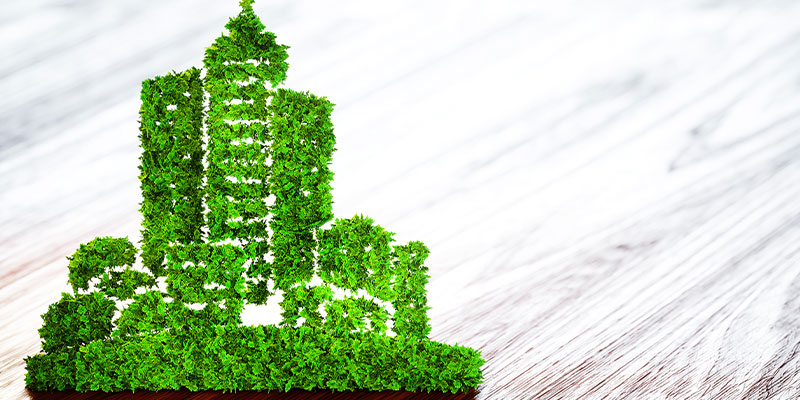An inefficient and harmful environment is created by consuming natural resources both today and in the future. The green building concept, which emerged to prevent this, stands out in many ways with the goals it wants to achieve and the benefits it provides. Stepping towards a sustainable future, this attitude supports biodiversity and the ecosystem without disturbing the surrounding natural habitat. It uses local, low-emission, and environmentally friendly products during the construction phase. An example of these products is the Greenweight elevator counterweight. Unlike traditional production methods, Greenweight elevator counterweights reduce CO2 emissions 5-6,5 times less. Moreover, with such details, it supports not only the environment but also the construction industry and buyers. In the long term, it becomes attractive to everyone with benefits such as increasing the value of the building, saving with renewable energy sources, and increasing the level of health and welfare.
What is a Green Building?
The construction sector is one of the biggest sectors that harm the environment in many ways. It becomes a big problem with the use of soil bricks, concrete, and wood and the reduction of green areas to construct buildings. Because of this, this new and environmentally friendly concept becomes more popular day by day. Green buildings are buildings that don’t harm the environment in any way during the construction process or life cycle of the project. The life cycle of the project starts with the design process and ends with bulldozing. The environmental policy of these buildings has followed all parts of the life cycle. Most especially, it includes details such as energy and water use, material selection, and increasing the green areas around the environment. These buildings are also called sustainable or environmentally friendly buildings.
Goals of Green Building
The green building follows a set of rules from the point of concept and develops the project based on the goals they set from the beginning. The prominent foundation of the goals is the protection of the environment. No green space is plundered for the construction of the building. On the contrary, it adopts goals such as protecting the ecosystem and reducing waste generation. Also, it uses renewable energy sources and encourages people who will live in the building to use these resources. Accordingly, the these buildings also aims to create areas where wind and solar energy can be obtained during construction. Sustainable use of materials and resources can also be counted as one of the goals. In this way, the use of renewable and low-emission materials stands out.
Characteristics of Green Buildings
The most known and fundamental characteristics of green buildings are local resource preservation, natural ventilation and lighting, energy savings, cost-effectiveness, healthier inhabitants and material efficiency. This buildings provide a green and healthy environment, and that’s why the characteristics of the buildings can tempt many people. Living conditions in the 21st-century and decreasement in the green areas, these features become what everyone wants.
Local resources preservation
These buildings are structures that protect the green areas around the building and the ecosystem. Local resources are preserved, and local materials are preferred. In this way, it is compatible with the environmental policy they adopt.
Natural ventilation and lighting
It is tailor-made for maximum use of sunlight and to provide natural ventilation. Also, energy savings and a quality indoor environment are possible with ventilation and lighting.
Energy savings
These buildings are structures that adopt strategies to reduce energy use because of their environmental policies. The use of recyclable and renewable energy sources is prevalent.
Cost-effectiveness
Although green building may seem like a costly attempt, it is an important investment that provides cost-efficiency in the long run. The environmentalist approach brings savings from many things, especially energy. This factor also increases the value of the building in the long run.
Healthier Inhabitants
These buildings goes up the wellness of people and create a healthy environment for those who live in them due to the materials they use. In favor of low-emission materials, indoor air quality increases, and the spread of toxic substances is reduced. Natural lighting and efficient airflow are the most important factors that provide comfort indoors.
Material efficiency
The materials used are everlasting, high quality, and local. Mostly, these materials consist of recyclable and renewable materials, minimizing the amount of waste. From this point, the environmental policy is followed in the materials used.
Benefits
This environmental attitude has many benefits that are not one-dimensional. Particularly, They have an important role in our sustainable future in the areas of environmental, economic, and social. Environmentally, they preserve green areas, ecosystems, and biodiversity. They not only decrease water and energy waste but also increase the quality of these resources by improving airflow and energy. Economically, they provide a higher property value compared to their construction costs. Also, they are advantageous in terms of the energy savings they provide. Finally, they holistically increase life quality socially. They are very productive and comfortable environments for both living and working.



